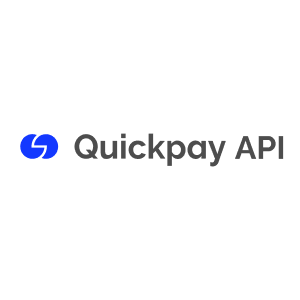
The Quickpay API is based on the principles of Representational State Transfer (REST) allowing clients to create, view, modify and delete resources using standard HTTP request methods.
Visit learn.quickpay.net/tech-talk/ for more information about the system.
The Quickpay API is based on the principles of Representational State Transfer (REST) allowing clients to create, view, modify and delete resources using standard HTTP request methods.
Visit learn.quickpay.net/tech-talk/ for more information about the system.
Please note! Use of the integration is at your own risk, and we only provide limited support on installation and usage of the integration.
In this article you can find help to get started with testing out API with Postman or cURL, and some examples in different coding languages.
See our technical documentation for a walkthrough of our API, and guides to get started.
Postman is a GUI to get started working with the API, fast and simple.
We have made a collection for Postman that gives you the most important links
We have also made a YouTube video, that shows how to get started with Postman Youtube guide
Test your connection to the Quickpay API
curl -v -su '' -H 'Accept-Version: v10' <https://api.quickpay.net/ping
At Enter host password for user you need to input your API key.
And then you should get an answer in your terminal saying something like
{“msg”:”Pong from Quickpay API V10, scope is merchant”}
If you have a cURL that you use often you can send it through with the first call, it looks like this
curl -v -su ':0742048b6y90a99788k5f61b3c31d54ah2fc5fd455183fbdd71e4bbgc4d16fc1' -H 'Accept-Version: v10' https://api.quickpay.net/ping
Note that there is a : in front of the key and the above key is a fictive key and cannot be used for testing.
If the cURL fails, check to see if you are using the correct API key, next check if you have set the correct permissions for the user.
Example:
The example below calls a subscription, with the id you input into the url instead of {id} og gives the new transaction an order number tamtam123, and captures 1,- DKK + fee.
curl -v -su '' -H 'Accept-Version: v10' -H "Content-Type: application/json" -X POST -d '{"order_id":"tamtam123","currency":"DKK","amount":"100","autofee":true}' https://api.quickpay.net/subscriptions/{id}/recurring
Here you will find examples written in different programming languages.
These are typically code snippets our customers have sent us, Quickpay, so using this code will therefore be completely at your own risk.
A nice customer made us a complete solution with a Quickpay object, where you only need to fill in the necessary data,
and an aspx page, with a html form that fills out from the code behind and submits automatically - all in one pageload.
The zip file (Quickpay VB_NET.zip) beneath includes_
There are comments with guiding tips in the files.
Note regarding charset: you must use UTF8 and not UTF32 encoding in this example.
Example for .net can be downloaded directly from the developers GitHub page.
Beneath you’ll find an example of an ASP integration with a form and a callback, including SHA256 encryption and the checksum and handling of the JSON response in the callback.